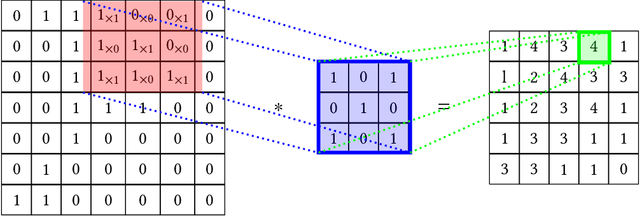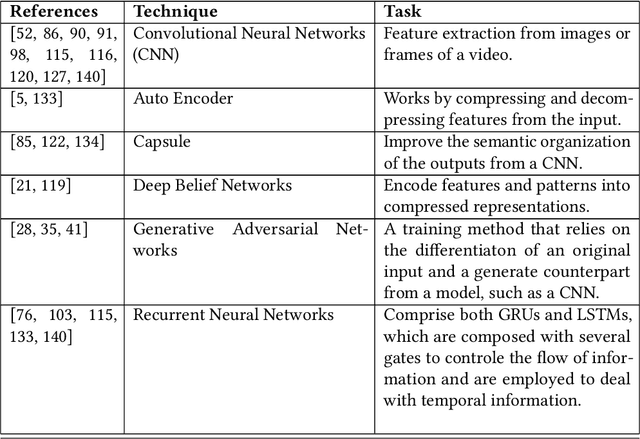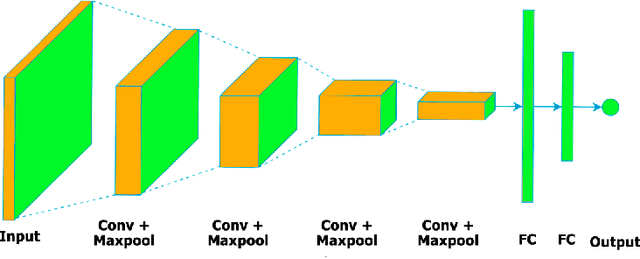Claudio Filipi Gonçalves dos Santos
ISP meets Deep Learning: A Survey on Deep Learning Methods for Image Signal Processing
May 23, 2023Abstract:The entire Image Signal Processor (ISP) of a camera relies on several processes to transform the data from the Color Filter Array (CFA) sensor, such as demosaicing, denoising, and enhancement. These processes can be executed either by some hardware or via software. In recent years, Deep Learning has emerged as one solution for some of them or even to replace the entire ISP using a single neural network for the task. In this work, we investigated several recent pieces of research in this area and provide deeper analysis and comparison among them, including results and possible points of improvement for future researchers.
eXplainable Artificial Intelligence on Medical Images: A Survey
May 12, 2023Abstract:Over the last few years, the number of works about deep learning applied to the medical field has increased enormously. The necessity of a rigorous assessment of these models is required to explain these results to all people involved in medical exams. A recent field in the machine learning area is explainable artificial intelligence, also known as XAI, which targets to explain the results of such black box models to permit the desired assessment. This survey analyses several recent studies in the XAI field applied to medical diagnosis research, allowing some explainability of the machine learning results in several different diseases, such as cancers and COVID-19.
Gait Recognition Based on Deep Learning: A Survey
Jan 10, 2022



Abstract:In general, biometry-based control systems may not rely on individual expected behavior or cooperation to operate appropriately. Instead, such systems should be aware of malicious procedures for unauthorized access attempts. Some works available in the literature suggest addressing the problem through gait recognition approaches. Such methods aim at identifying human beings through intrinsic perceptible features, despite dressed clothes or accessories. Although the issue denotes a relatively long-time challenge, most of the techniques developed to handle the problem present several drawbacks related to feature extraction and low classification rates, among other issues. However, deep learning-based approaches recently emerged as a robust set of tools to deal with virtually any image and computer-vision related problem, providing paramount results for gait recognition as well. Therefore, this work provides a surveyed compilation of recent works regarding biometric detection through gait recognition with a focus on deep learning approaches, emphasizing their benefits, and exposing their weaknesses. Besides, it also presents categorized and characterized descriptions of the datasets, approaches, and architectures employed to tackle associated constraints.
Avoiding Overfitting: A Survey on Regularization Methods for Convolutional Neural Networks
Jan 10, 2022



Abstract:Several image processing tasks, such as image classification and object detection, have been significantly improved using Convolutional Neural Networks (CNN). Like ResNet and EfficientNet, many architectures have achieved outstanding results in at least one dataset by the time of their creation. A critical factor in training concerns the network's regularization, which prevents the structure from overfitting. This work analyzes several regularization methods developed in the last few years, showing significant improvements for different CNN models. The works are classified into three main areas: the first one is called "data augmentation", where all the techniques focus on performing changes in the input data. The second, named "internal changes", which aims to describe procedures to modify the feature maps generated by the neural network or the kernels. The last one, called "label", concerns transforming the labels of a given input. This work presents two main differences comparing to other available surveys about regularization: (i) the first concerns the papers gathered in the manuscript, which are not older than five years, and (ii) the second distinction is about reproducibility, i.e., all works refered here have their code available in public repositories or they have been directly implemented in some framework, such as TensorFlow or Torch.
 Add to Chrome
Add to Chrome Add to Firefox
Add to Firefox Add to Edge
Add to Edge